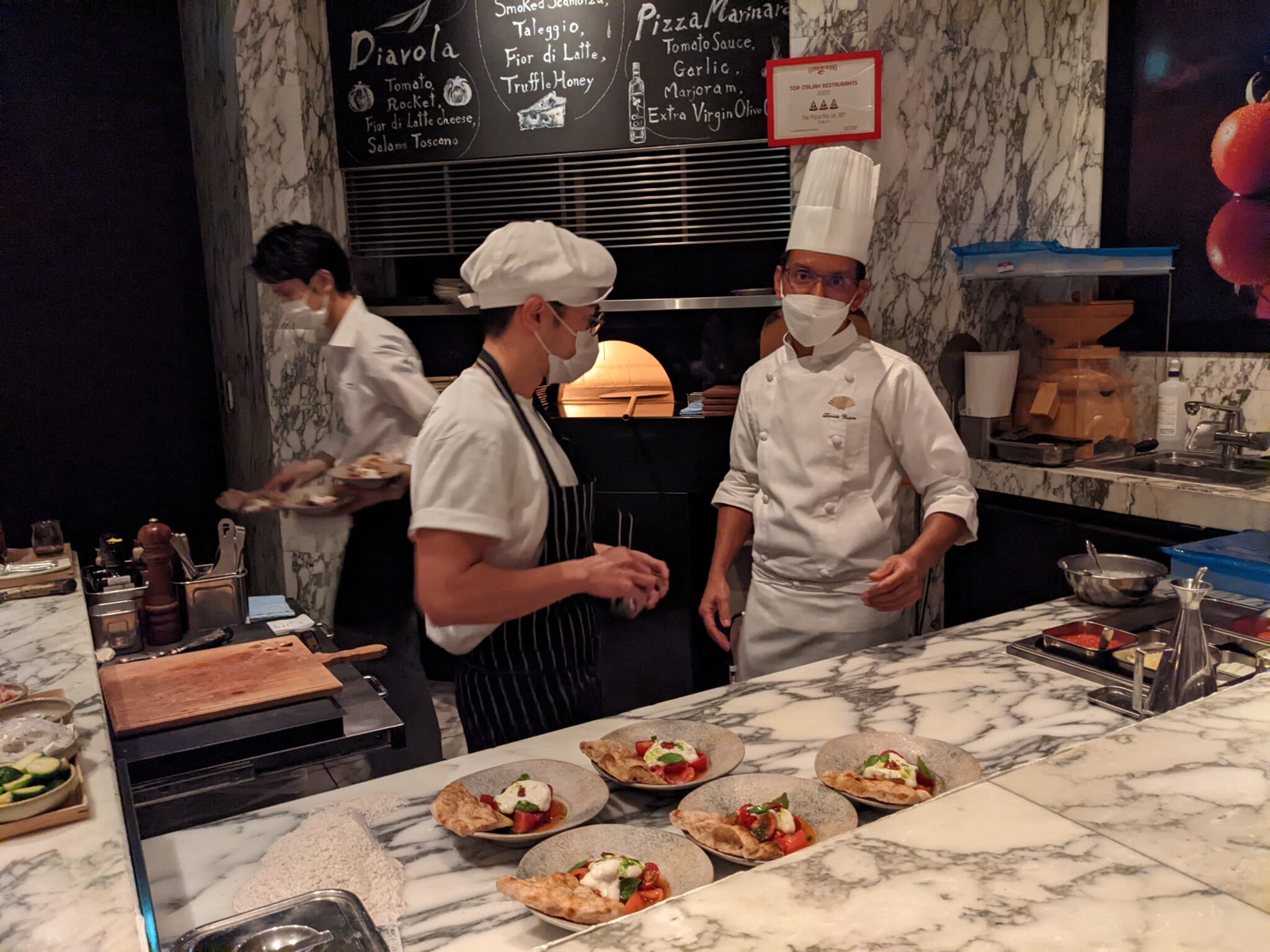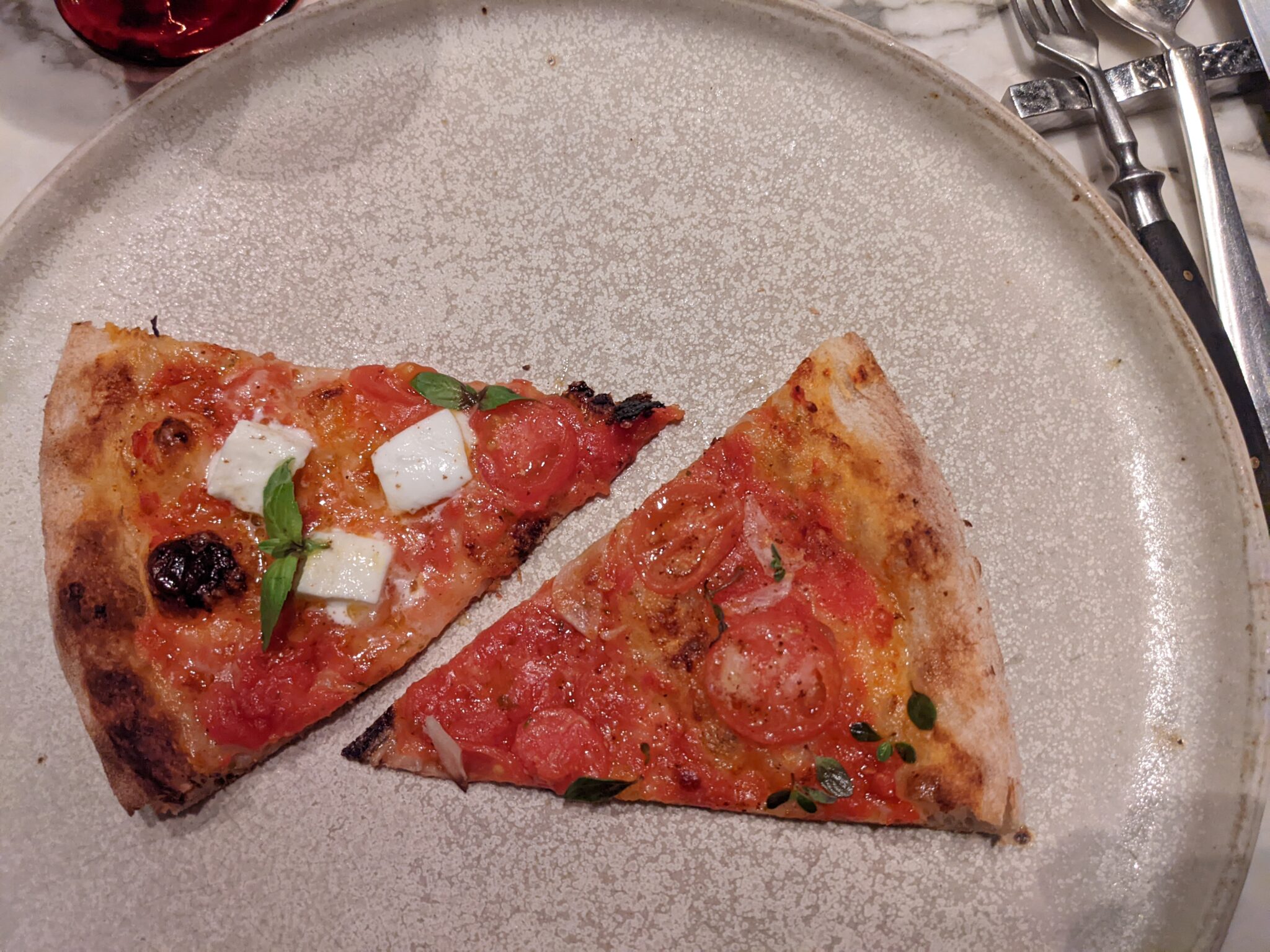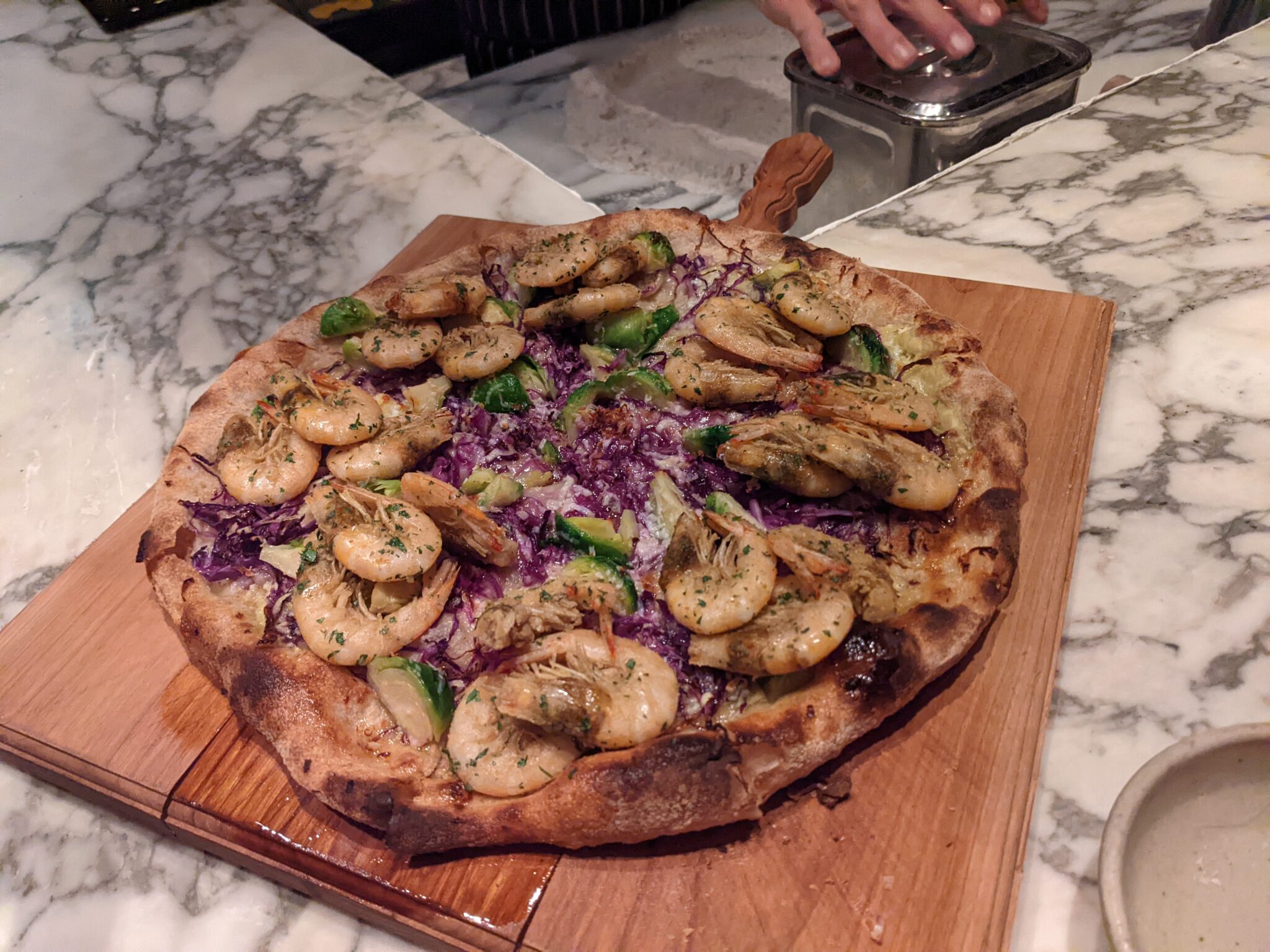Outside of Japan, the art of professional cooking is almost always performer in a kitchen, out of site from the dining area. But not in Japan, where counter seating is common and diners can watch chefs at work, making cooking, or chefing, a performing art. Restaurants designed with the kitchen work area on the far side of a counter allows personal interaction and communication between diners and the person or people preparing the meal, as well as—at least for me—the diner to learn by observation. The most obvious example of this genre is sushi, which has been going on for well over 100 years, maybe even 150 years. And more recently with high end tenpura, where the chef slices, chops, and batters ingredients in front of diners before deep frying the items in a vat of hot oil that may or may not be completely in view of the customers. It’s a fun way to dine, and a style that is increasingly showing up in other countries.)
I think the first time I was exposed to this style of dining was when I went to a Benihana restaurant in Portland. I don’t remember much about the food, but I do remember the way the meal was prepared. It was by a chef who looked to be Japanese (he was Asian, which was at the time probably good enough for westerners with little familiarity with things Japan besides perhaps brands such as Sony, Datsun, and maybe Honda motorbikes. Benihana was famous not so much for its cuisine but instead for the chefs who would stand in front of customers and cook teppanyaki while tossing and spinning knives in front of diners either in awe of the chef’s skill or more likely in fear of being skewered by a knife that flew astray. And this was at the time as the famous sold only on TV Ginsu Knife period, a relentless TV marketing campaign to sell very sharp knives with a Japanese sounding name to America via TV advertising. If a Ginsu knife could cut through cans and lumber, imagine what it could do to your flesh (the knives were actually made in the US).
Fast forward forty-five years or so and most performance cooking takes place either in Japan or in Japanese restaurants (mostly sushi) outside of Japan. Last night we had “performance” pizza at the Tokyo Mandarin Oriental Hotel’s Pizza on 38th restaurant. The chef, actually the hotel’s executive chef Daniel Cason, stands behind a marble counter that seats eight and prepares pizzas. And not just any pizza, but relatively small pies made using seven different grain mixes for the dough, each dough/crust paired with different toppings. All the grains, including several varieties of wheat as well as rye added in varying ratios, is from Italy, as are most of the other ingredients. I think the only Japanese sourced items were vegetables and some venison that was cured in-house. The oven is in the back of the work area, and although it was not wood-fired, it worked just as well, and quickly, to cook the pies. I imagine it would be impossible to add a wood fired oven after construction of the building was completed, as in this case.
My friend Gerhard had invited me, my wife and five other people for a kashikiri (all seats reserved for one group) meal, so all eight of the seats were taken by our group. Which was great, as it allowed us to try every pizza on the menu, or at least eight or nine, which is way more than most people could eat alone. The pies used different dough mixes which were paired with the toppings. For example, tomato sauces used one mix of dough, while olive oil or cheese toppings were on top of a different crust. We washed the pizza down with seven or eight bottles of wine, which is probably why the total came to something like ¥25,000 per person, a price approaching that of good sushi. But it was fun, and worth it.

I think the next food to be done “performance” style, with the chef preparing a meal before customers, might be soba. I can see restaurants where after dining on the usual assortment of preliminary dished found on the menus of high-end soba shops and imbibing an assortment of sake or wine, the soba maker wheels a small table out next to the customers’ table to make a small batch of soba noodles. As he or she measures, sifts and kneads the dough, a small soba mill would be turning nearby, grinding soba kernels into flour used to make the noodles. Then the dough would be rolled out, then cut, before being taken to a large kettle of boiling water to be cooked. It might be possible to boil the water next to the table, although that could be dangerous. 
